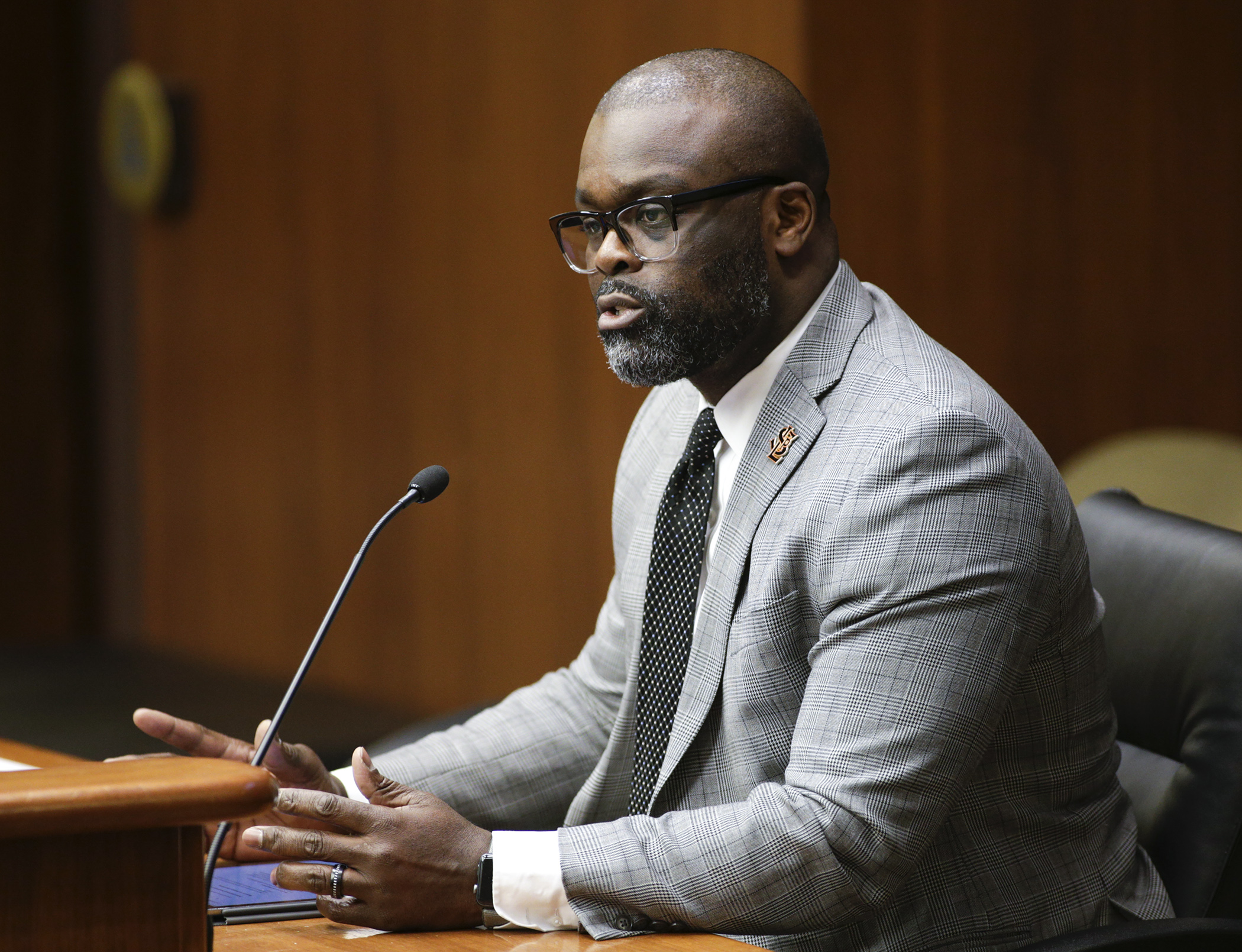Leaders share strategies on tackling the opportunity gap

Across the country and throughout Minnesota there are some very predictable and persistent gaps in opportunity, particularly related to the overall success of students of color.
The House Education Policy Committee this week heard from representatives of three school districts and the Prairie Island Indian Community on what innovative and effective strategies they’re using to tackle the problem, and the results they’re seeing.
“There’s really no magic bullet to attacking the opportunity gap,” said Rep. Cheryl Youakim (DFL-Hopkins), the committee chair. “Our districts across the state are doing a lot of good work in trying to figure out how to best do that and wanted to throw out some ideas so people could see that.”
Astein Osei, superintendent of St. Louis Park Public Schools, highlighted the district’s focus on addressing the opportunity gap through culturally responsive professional development. Several years ago the district’s teachers actively voted to use some of their alternative professional pay system dollars to receive coaching and development in the area of racial equity.
“In order to interrupt the systems of inequity that we’re facing, it starts with us as educators and it requires a lot of adaptive and hard work undoing the things we’ve learned over our time in life in this country,” he said.
Sandy Lewandowski, superintendent of Intermediate School District 287, also spoke about the challenges the district faces in meeting the needs of all its students. Many students who attend intermediate school districts have special needs and have behavioral and mental health issues. The district, comprised of 12 member districts located west of the metro, is no exception.
The district is disproportionately comprised of students of color, who are three times more likely to be labeled as emotionally and behaviorally disordered, and labeled with a learning disability, than their peers.
“The most striking of our data show that if you’re black you’re six times more likely to be directed to the corrections system rather than a mental health treatment program,” Lewandowski said. “We are living in the middle of the pipeline to prison and we see the trajectory of some students in real time starting with the very youngest that we serve.”
The district took active steps to correct this over the past few years. It’s currently conducting a two-year, Therapeutic Teaching Model program — paid for through a Department of Human Services Mental Health Grant — that has an in-class therapist.
Additionally, in 2017, they made the decision to remove school resource officers and implement a School Safety Coaches Model. Its primary goals are to help foster better relationships between students and staff, and to address problem behavior before it escalates to the point of police intervention.
They’re already seeing promising results. One school within the district reportedly resolved 95 percent of incidents on campus without police interventions, resulting in fewer arrests, citations and suspensions. This has led to better relationships between students and staff, and an overall better culture.
Rep. Sondra Erickson (R-Princeton) applauded the work done by the district. “I’ve been following you for a very long time and I have the greatest respect for the strides you’ve been making over the years with your student body.”
Related Articles
Search Session Daily
Advanced Search OptionsPriority Dailies
Ways and Means Committee OKs proposed $512 million supplemental budget on party-line vote
By Mike Cook Meeting more needs or fiscal irresponsibility is one way to sum up the differences among the two parties on a supplemental spending package a year after a $72 billion state budg...
Meeting more needs or fiscal irresponsibility is one way to sum up the differences among the two parties on a supplemental spending package a year after a $72 billion state budg...
Minnesota’s projected budget surplus balloons to $3.7 billion, but fiscal pressure still looms
By Rob Hubbard Just as Minnesota has experienced a warmer winter than usual, so has the state’s budget outlook warmed over the past few months.
On Thursday, Minnesota Management and Budget...
Just as Minnesota has experienced a warmer winter than usual, so has the state’s budget outlook warmed over the past few months.
On Thursday, Minnesota Management and Budget...